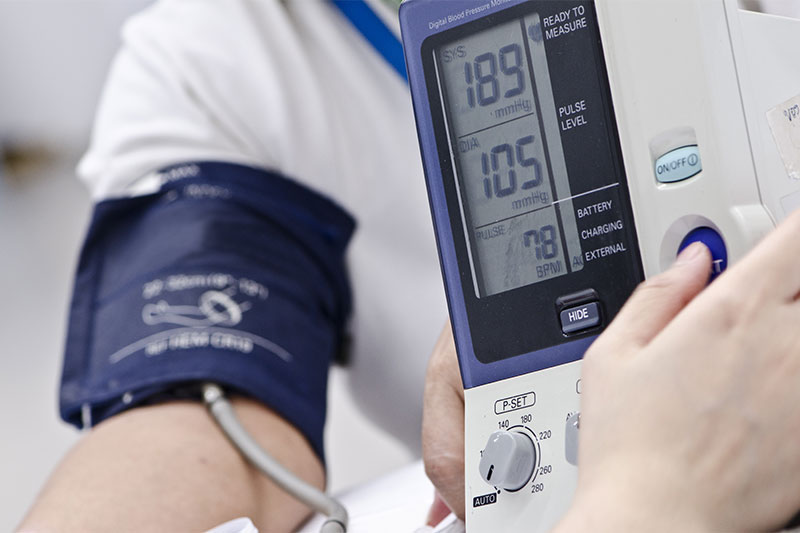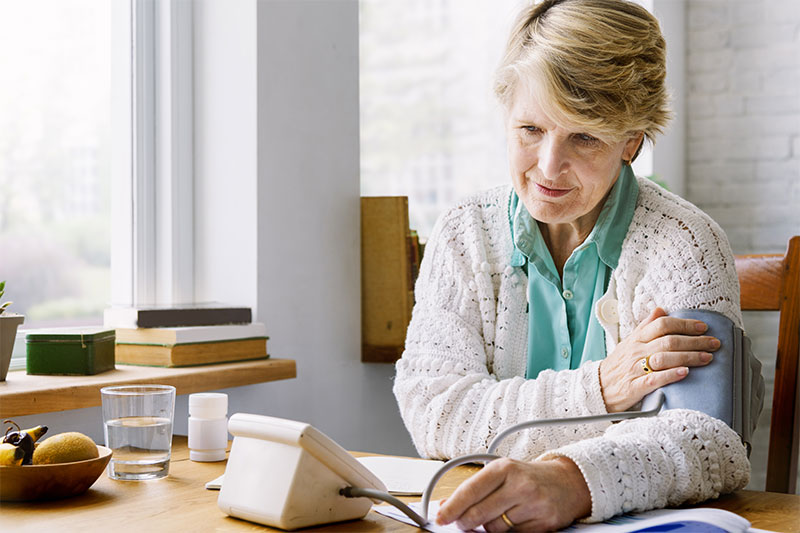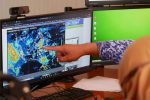
As we age, the likelihood of developing a serious health condition increases, making medical care more important in our day-to-day lives. However, a few healthy habits established during midlife may reduce the likelihood of major health problems in later life. You can alert yourself to a long list of serious illnesses by practicing a simple habit that takes just minutes out of your day. Whether you’re 50 or 80, there is one thing you should be doing every day – and many of us don’t.
Health Problems Can Result From High Blood Pressure
Hypertension can cause a range of serious illnesses, even if you don’t notice symptoms. The Mayo Clinic notes that high blood pressure can quietly damage the body for years before symptoms develop. High blood pressure without treatment can lead to disability, poor quality of life, or even a deadly heart attack or stroke. Additionally, untreated high blood pressure has been linked to dementia, aneurysms, heart disease, kidney damage, vision loss, sexual dysfunction, and more.
If You’re Between 50 And 80 Years Old, Check Your Blood Pressure
According to a recent study published in JAMA Network Open, people between the ages of 50 and 80 are at higher risk of developing hypertension and have higher adverse outcomes from uncontrolled BP, or blood pressure than younger adults.
For this reason, some experts recommend checking your blood pressure daily, even if you don’t experience any symptoms. According to the study, home blood pressure monitoring is associated with moderate blood pressure reductions and is cost-effective. In addition, the results indicate that doctors should develop protocols to teach patients how important self-measured blood pressure monitoring (SBPM) is and how frequently SBPM should be performed.
According to the researchers, only 48 percent of people should regularly check their blood pressure at home—and even fewer communicate this information to their doctors. Perhaps they are unaware of its benefits: Only 61 percent of survey respondents with hypertension were advised to check their blood pressure at home by their physicians.
For At-Home Monitoring, Try These Tips

According to the American Heart Association (AHA), monitoring your blood pressure at home requires consistency. The organization recommends taking your readings at the same time each day, such as in the morning and evening, and recording your results on a tracking sheet for future reference. During each BP monitoring session, take two to three readings one minute apart for the most accurate reading, the organization says.
Keeping your blood pressure under control also requires avoiding factors affecting it. You should empty your bladder five minutes before taking your readings, and you should not smoke, drink, or exercise within 30 minutes of taking them. Remove any clothing that is a barrier between you and your blood pressure monitor, and sit still.
Let’s Talk About How To Lower Your Blood Pressure
It’s important to monitor your blood pressure regularly, share that information with your doctor, and take concrete steps to lower it if it’s high. This can be achieved by eating a healthy diet and exercising regularly, quitting smoking, limiting alcohol intake, managing stress, sleeping well, and reducing sodium intake. If you cannot sleep well, you will need to take some sleep aids until you can get yourself to sleep better. However, one easy tip is to cut out caffeine after 2 pm and keep away from the screens within two hours of bed so your melatonin levels increase. Keep junk food out of your home too.
Medications or breath training devices may also be prescribed to help lower your blood pressure by your doctor. If you are concerned about hypertension, speak to your doctor for more information.


